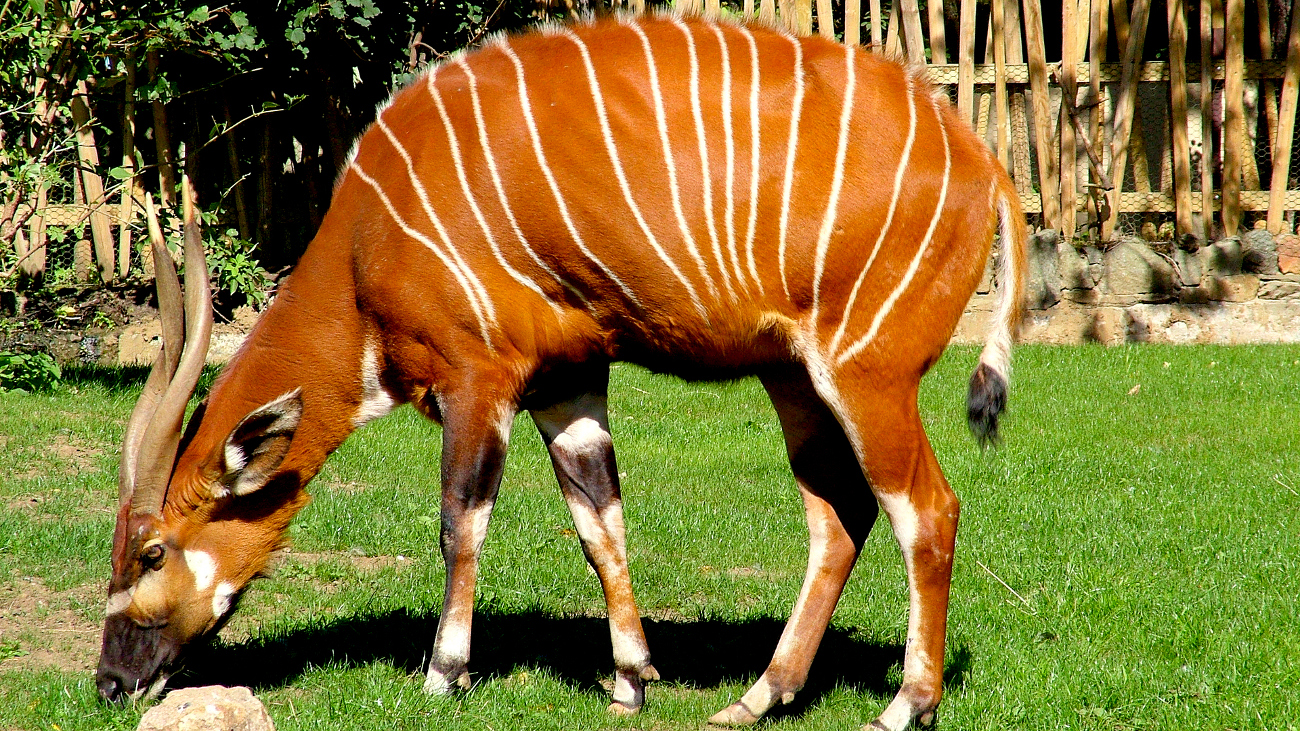- Home
- Conservancy
- Bongo
Description
The bongo (Tragelaphus eurycerus) is a herbivorous, mostly nocturnal forest ungulate. It is among the largest of the African forest antelope species. Bongos are characterised by a striking reddish-brown coat, black and white markings, white-yellow stripes and long slightly spiralled horns. Indeed, bongos are the only tragelaphid in which both sexes have horns. They have a complex social interaction and are found in African dense forest mosaics.
The western or lowland bongo, T. e. eurycerus, faces an ongoing population decline, and the IUCN Antelope Specialist Group considers it to be Near Threatened on the conservation status scale. The eastern or mountain bongo, T. e. isaaci, of Kenya, has a coat even more vibrant than that of T. e. eurycerus. The mountain bongo is only found in the wild in one remote region of central Kenya. This bongo is classified by the IUCN Antelope Specialist Group as Critically Endangered, with more specimens in captivity than in the wild.
Fun Facts
Like other forest ungulates, bongos are seldom seen in large groups. Males, called bulls, tend to be solitary, while females with young live in groups of six to eight. Bongos have seldom been seen in herds of more than 20. Gestation is about 285 days (9.5 months), with one young per birth, and weaning occurs at six months. Sexual maturity is reached at 24
